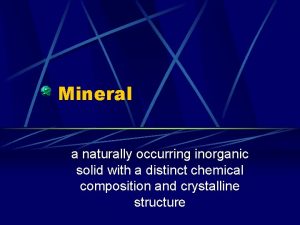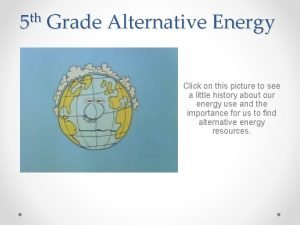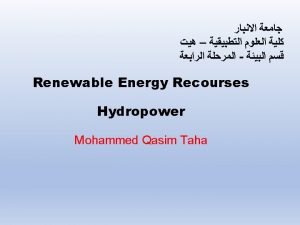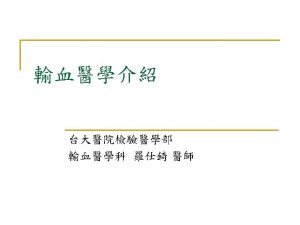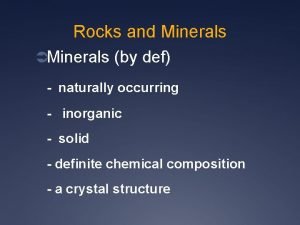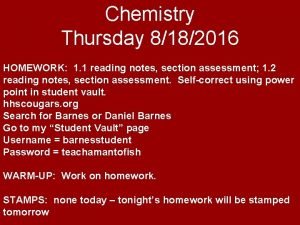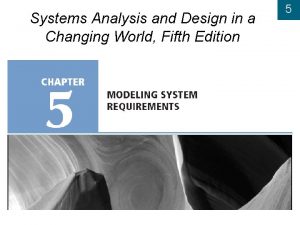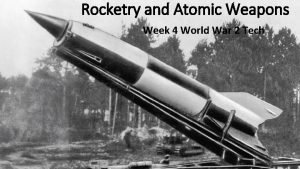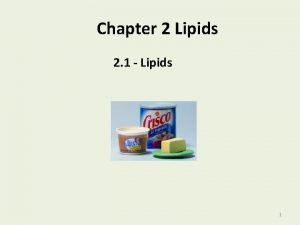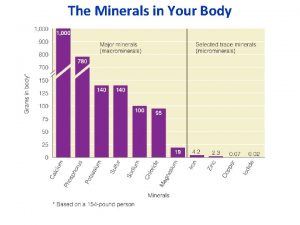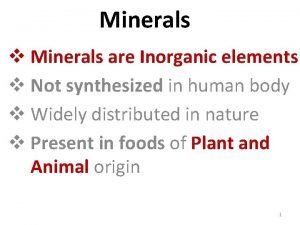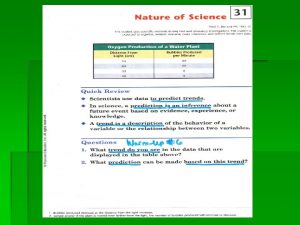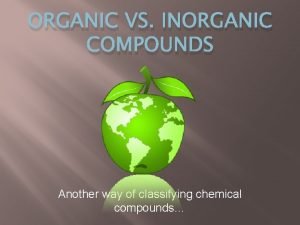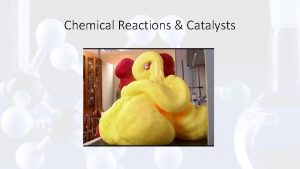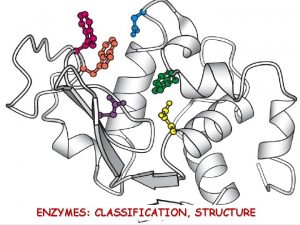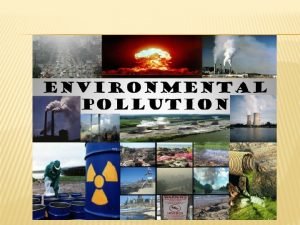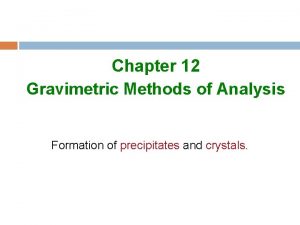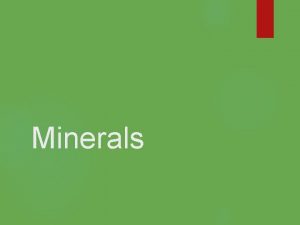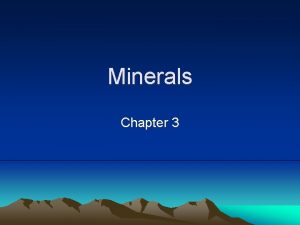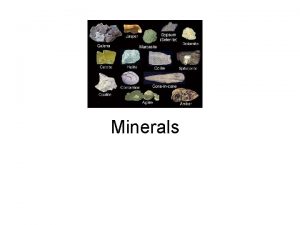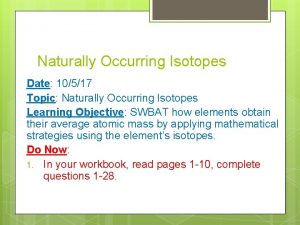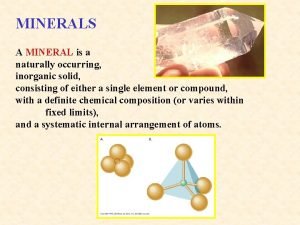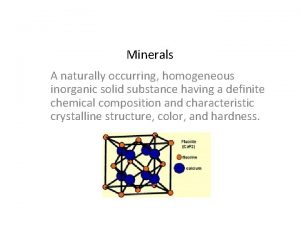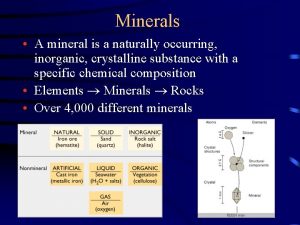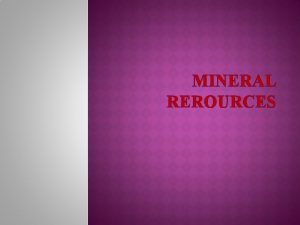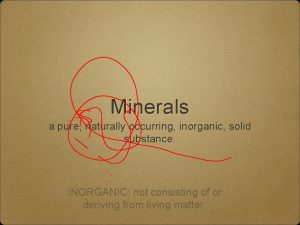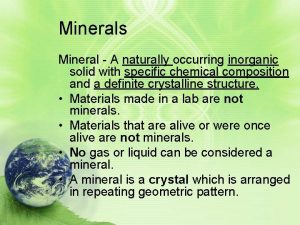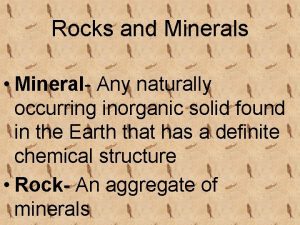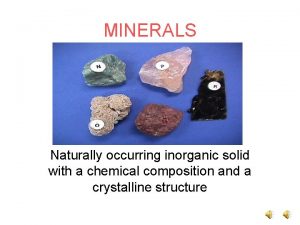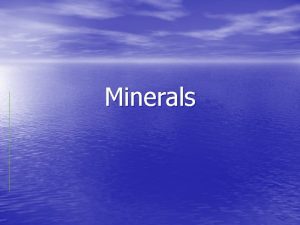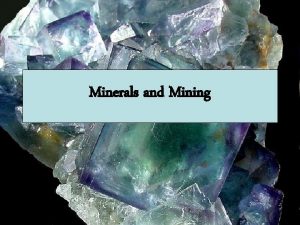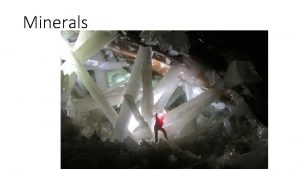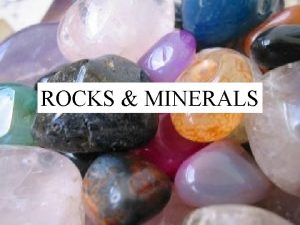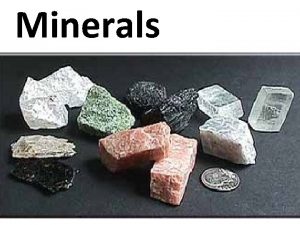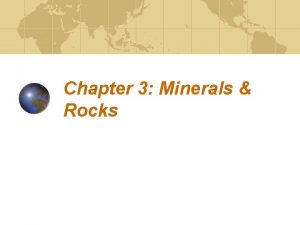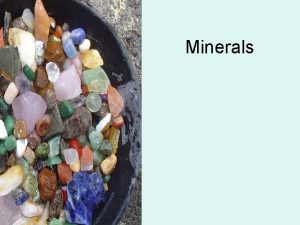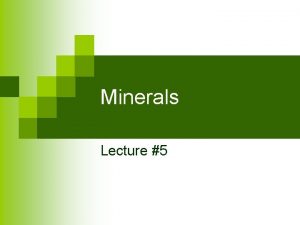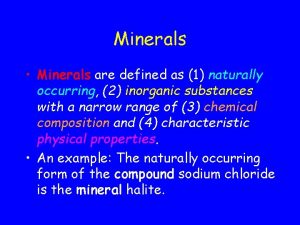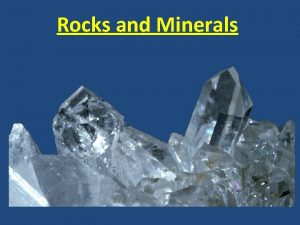Minerals Minerals n n n Naturally occurring Inorganic



























- Slides: 27

Minerals

Minerals n n n Naturally occurring Inorganic Solid Crystal structure Definite chemical composition

What is a Mineral? Most minerals look like rocks, so are minerals rocks? n Not really, as rocks are made of minerals, but minerals are not made of rocks. n

Naturally Occurring n n n Minerals must occur naturally. Cannot be man made. Cement, bricks, steel, and glass all come from materials found in the earth, but these are made by people.

Inorganic n n Inorganic materials were never living. Coal is made from the remains of ancient plants and animals, so coal is not a mineral.

Solid n n n The state of matter when the material is below its freezing point. Definite shape, definite volume. Particles are fixed in place.

Crystal Structure n n The particles of the material line up in a regular, repeating pattern. Has flat sides called faces, that meet at sharp edges and corners.

Definite Chemical Composition n Always contains certain elements in the same proportion. Almost all minerals are compounds, which are two or more different elements bonded together (holding hands). Pyrite is two sulfur atoms holding hands with an atom of iron.

Chemical Formulas n n Have a definite format. Written together means they are bonded. Coefficients tell how many of the whole thing you have. Subscripts tell how many of the atom before it that you have. n n n So 2 H means two separate hydrogen atoms. H 2 mean two hydrogen atoms holding hands. H 2 O means two hydrogen atoms holding hands with an oxygen atom.

More Formulas n n 2 H 2 O means you have two separate water molecules, each containing two hydrogen and one oxygen atom. Bornite is a copper ore that turns purple when exposed to air. It’s formula is Cu 5 Fe. S 4. n n So how many of each atom are present? Five copper one iron four sulfur

FORMATION n 1. Mineral are formed: When magma cools n Cools Slowly = LARGER crystals n Cools Quickly = smaller crystals When a mineral is dissolved in a liquid 2. • • n n Liquid evaporates Slowly = LARGER crystals Liquid evaporates Quickly = smaller crystals Example: Geode, a rock with hollow interior lined with crystals (mostly quartz)

Groups of Minerals n n n Divided into two groups based on mineral composition Silicate minerals Nonsilicate minerals

Silicate Minerals n n Made of silicon and oxygen, the most common elements in the Earths crust (90%) Quartz Feldspar Mica

Nonsilicate Minerals n Usually contain carbon, oxygen, fluorine, and sulfur.

Identifying Minerals n Each mineral has specific properties that can be used to identify it. n Hardness density luster color streak crystal system cleavage and fracture special properties n n n n

Hardness n n n A measure of how easily a mineral can be scratched. Determined by the atomic structure of the mineral. Friedrich Mohs developed the scale we use today.

Density n n Minerals will have a certain density regardless of the size of the sample. When geologists compare the weight of the mineral to the weight of an equal volume of water it is called specific gravity.

Color n n Not especially useful in identifying minerals, as some minerals like quartz can come in a variety of colors. Impurities and weathering can change the color of a mineral, so color is not the best way to identify a mineral.

Streak n n The color of its powder. Not always the same as the color of the mineral. Pyrite has a gold color, but its streak is a greenish black. Much more reliable than color.

Luster n n The way a mineral reflects light. Can be metallic or non -metallic. Shiny or dull. Earthy, waxy, pearly, glassy.

Crystal System n n Six groups based on number and angle of the faces. Example: Halite is cubic, as it always forms perfect cubes.

Cleavage n n The way a mineral breaks apart. If it splits easily along flat surfaces the property is cleavage.

Fracture n n n A mineral fractures if it breaks in a random or irregular pattern. A dirt clod fractures! When a mineral fractures it just crumples into small pieces.

Special Properties n n Some minerals have a property known as fluorescence, which means they glow under UV light. Others are magnetic, radioactive or have electrical properties.

Special Properties

USES Of MINERALS Minerals meet the everyday needs of people Ores-minerals from which metals and nonmetals can be removed in useable amounts Metals Have shiny surfaces n 1. 2. Can conduct electricity and heat • Are Malleable-can be hammered into thin sheets without breaking • Are Ductile-can be pulled into thin strands without breaking Examples: Iron, Lead, Aluminum, Copper, Silver & GOLD •

Gemstones n Gemstones are highly valued for their beauty, hardness and rarity, than for their usefulness. Examples of gemstones include diamond, sapphire, ruby, emerald, aquamarine, topaz, and tourmaline.
 Naturally occurring inorganic solid material
Naturally occurring inorganic solid material Advantages of geothermal energy
Advantages of geothermal energy Naturally occurring areas of hydrothermal resources
Naturally occurring areas of hydrothermal resources Naturally occurring areas of hydrothermal resources
Naturally occurring areas of hydrothermal resources Reverse typing
Reverse typing Naturally occurring mineral
Naturally occurring mineral Largest naturally occurring element
Largest naturally occurring element Is a naturally occurring association among specific things
Is a naturally occurring association among specific things Largest naturally occurring element
Largest naturally occurring element Naturally occurring fatty acids
Naturally occurring fatty acids Minerals are inorganic elements that the body
Minerals are inorganic elements that the body Iron deficiency anemia smear
Iron deficiency anemia smear Find the probability of z occurring in the indicated region
Find the probability of z occurring in the indicated region Find the probability of z occurring in the indicated region
Find the probability of z occurring in the indicated region What process is occurring
What process is occurring Organic vs inorganic compounds
Organic vs inorganic compounds Inorganic catalyst vs enzyme
Inorganic catalyst vs enzyme Six classes of enzymes
Six classes of enzymes Organic vs inorganic
Organic vs inorganic Inorganic vs organic
Inorganic vs organic Air pollution class 9
Air pollution class 9 Organic and inorganic nutrients
Organic and inorganic nutrients Calculus subgingival
Calculus subgingival Mechanical entrapment coprecipitation
Mechanical entrapment coprecipitation Advanced inorganic chemistry lecture notes
Advanced inorganic chemistry lecture notes A narrow channel or slab of a mineral
A narrow channel or slab of a mineral Importance of pharmaceutical inorganic compound
Importance of pharmaceutical inorganic compound Inorganic nomenclature
Inorganic nomenclature
